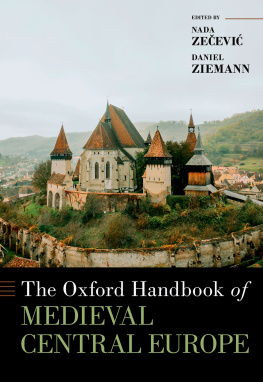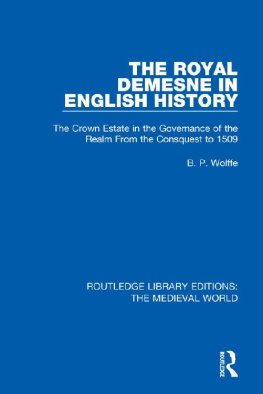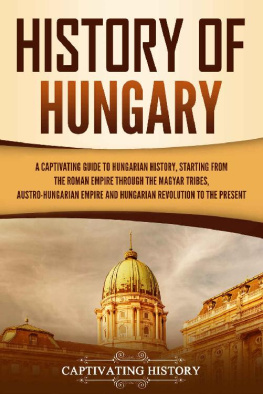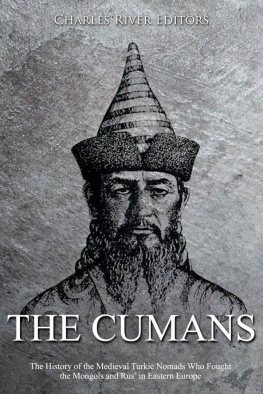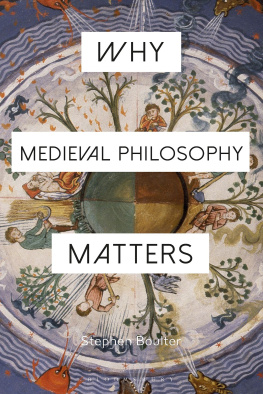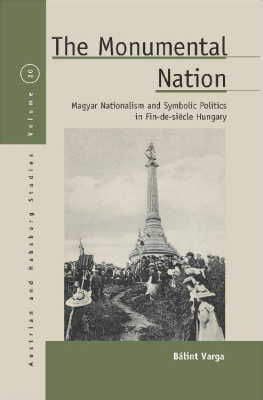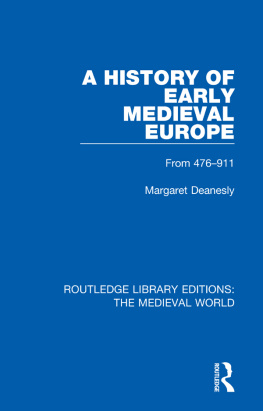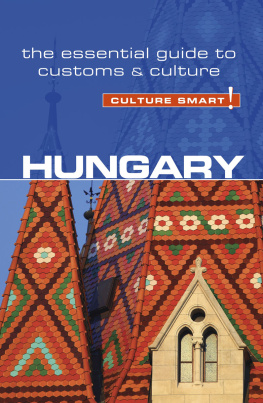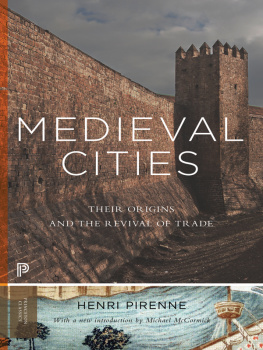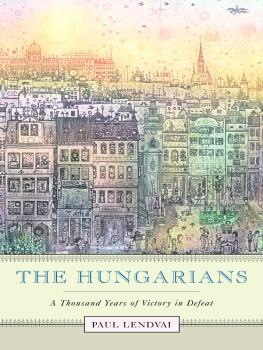The late P L E NGEL (1938-2001) was head of the Medieval Department at the Institute of History, Hungarian Academy of Sciences in Budapest.
A NDREW A YTON is Senior Lecturer in Medieval History at the University of Hull.
THE REALM OF ST STEPHEN

Published in 2001 by I.B.Tauris & Co Ltd
6 Salem Road, London W2 4BU
175 Fifth Avenue, New York NY 10010
www.ibtauris.com
In the United States and Canada distributed by St. Martins Press
175 Fifth Avenue, New York NY10010
Copyright Pl Engel, 2001
All rights reserved. Except for brief quotations in a review, this book, or any part thereof, may not be reproduced, stored in or introduced into a retrieval system, or transmitted, in any form or by any means, electronic, mechanical, photocopying, recording or otherwise, without the prior written permission of the publisher.
This book has been published with the support of the Hungarian Ministry of Cultural Heritage and the Frankfurt 99 Kht.
ISBN 1-86064-061-3
eISBN 9 78085 773 173 9
A full CIP record for this book is available from the British Library
A full CIP record for this book is available from the Library of Congress
Library of Congress catalog card: available
Typeset by The Midlands Book Typesetting Co, Loughborough, Leicestershire
Foreword
In 1993 I approached Pl Engel with an ambitious publication proposal: that he should write a new history of medieval Hungary for an English-language readership and that I could provide substantial assistance in bringing the project to realisation. Just how substantial my role was to be was only to become apparent some years later, when portions of the draft text began to appear on my desk; but from the outset it was clear what sort of book was needed. It was to be the first comprehensive survey of its subject in English, and rather than being merely a translation of an existing work, it was to be written afresh by one of Hungarys leading medievalists and with the non-Hungarian reader in mind.
As someone who had recently become interested in the medieval history of east-central Europe seeking to develop a research interest for myself as well as endeavouring to introduce medieval Hungary to undergraduate students I was only too well aware of the serious shortage of historical literature on the subject in English. (There was a good deal more in German, but a reading knowledge of that language is not possessed by many history undergraduates in Britain, nor I suspect in the USA.) There were, of course, general surveys of Hungarian history, from the classic volume by C.A. Macartney to the then recently published A History of Hungary, edited by Peter Sugar and Pter Hank; but treatment of the Middle Ages in these books, though expertly handled, is necessarily brief and selective. Also available was a range of specialised works (now more numerous), some translated from Hungarian, some written by scholars based in the West; and a useful selection of primary sources in modern editions. I can well remember the excitement with which I read these works, and the genuine enthusiasm with which my students took to the subject, despite the difficulties involved in bridging the chasm between concise historical surveys and demanding monographs and articles. It was, however, undoubtedly the case that, for newcomers to this field, the accessible historical literature was patchy in coverage and uneven in quality. The bulk of the most important writing on medieval Hungary was available only to those able to read Hungarian. What was urgently needed was a volume conceived on a large scale that combined a detailed narrative with a broad-based thematic coverage; which synthesised the most up-to-date research by Hungarian (and other) scholars; and which presented it in an accessible, readable fashion for a non-Hungarian audience. It was with these needs in mind that this book was written.
Naturally, we hope that the publication of this book, happily coinciding as it does with the thousandth anniversary of St Stephens coronation, will serve also to bring the medieval history of the Carpathian basin to the attention of a wider academic and general readership. The importance and distinctiveness of this regions history are matched only by the degree to which it has been neglected by the academic community of western Europe and the USA. Yet the region, and the realm of St Stephen within it, that bore the brunt of the Mongols onslaught on Europe in the 1240s, that became Europes leading producer of gold in the fourteenth century and that stoutly resisted the advance of the Ottoman Turks (whilst, under Matthias Corvinus, witnessing the first flowering of the Renaissance north of the Alps) in the fifteenth, surely deserves more attention than it has hitherto received. Such attention would be amply rewarded. For beyond gaining an understanding of the internal life and external relations of one of the major kingdoms of Christendom, an examination of medieval Hungarian history presents opportunities for fruitful comparisons with the familiar themes, social groups and institutions of western Europe. For example, while an English medievalist may be as intrigued by the honours of Angevin Hungary as the Florentine chronicler Matteo Villani appears to have been, he will also find in familiaritas, the relationship between lord and retainer (familiaris), a close resemblance to bastard feudalism.
What tends to emerge from such comparisons is the strong impression that St Stephens realm was at once part of the mainstream of Christendom, yet in some respects different, enduringly influenced by the cultural and social legacies of its pagan past and by its geographical location on the frontier of Christian Europe. This is an impression that is vividly conveyed by the numerous miniatures, nearly 150 of them, which decorate the text of the Illuminated Chronicle of c. 1360. Most striking in this respect is the symbolic depiction of Louis the Greats cosmopolitan court, but also notable are the miniatures that offer glimpses of Louiss armies, which are shown as consisting of western-style knightly warriors, supported by lightly equipped mounted archers, apparently of Cumanian or Iasian origin, wielding composite bows. And this is surely the impression of Angevin Hungary that would have been carried home by western-European visitors by men like the Dominican friar, Walter atte More, who in April 1346 arrived in Hungary on a diplomatic mission from England. His expenses account shows that he met the queen-mother at Visegrd, then travelled to Zagreb, where the royal army was mobilising, for discussions with King Louis himself. The English Dominican would, therefore, have seen at first hand the workings of the royal court and the distinctive features of Hungarian military organisation; and he may well have formed judgements about the character of the political elite and the capabilities of the kings army. Like other travellers in the region, he would no doubt have been struck by the comparative sparseness of the population. And he may also have gained some appreciation of the mineral wealth of Hungary and the advantages that it gave a young king with military ambitions. Thus, whatever the outcome of his negotiations, we can be fairly certain that the Dominican friar would have conveyed to his political masters in England a view of mid-fourteenth-century Hungary likely to arouse both intense interest and a certain amount of envy.
Whilst further specialist works on particular aspects of the Hungarian Middle Ages written in western-European languages are greatly to be welcomed (as, for example, Martyn Radys forthcoming study of the
Next page

